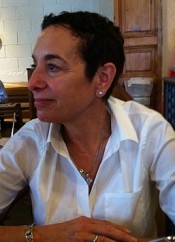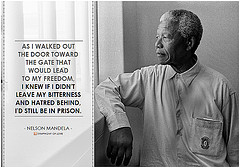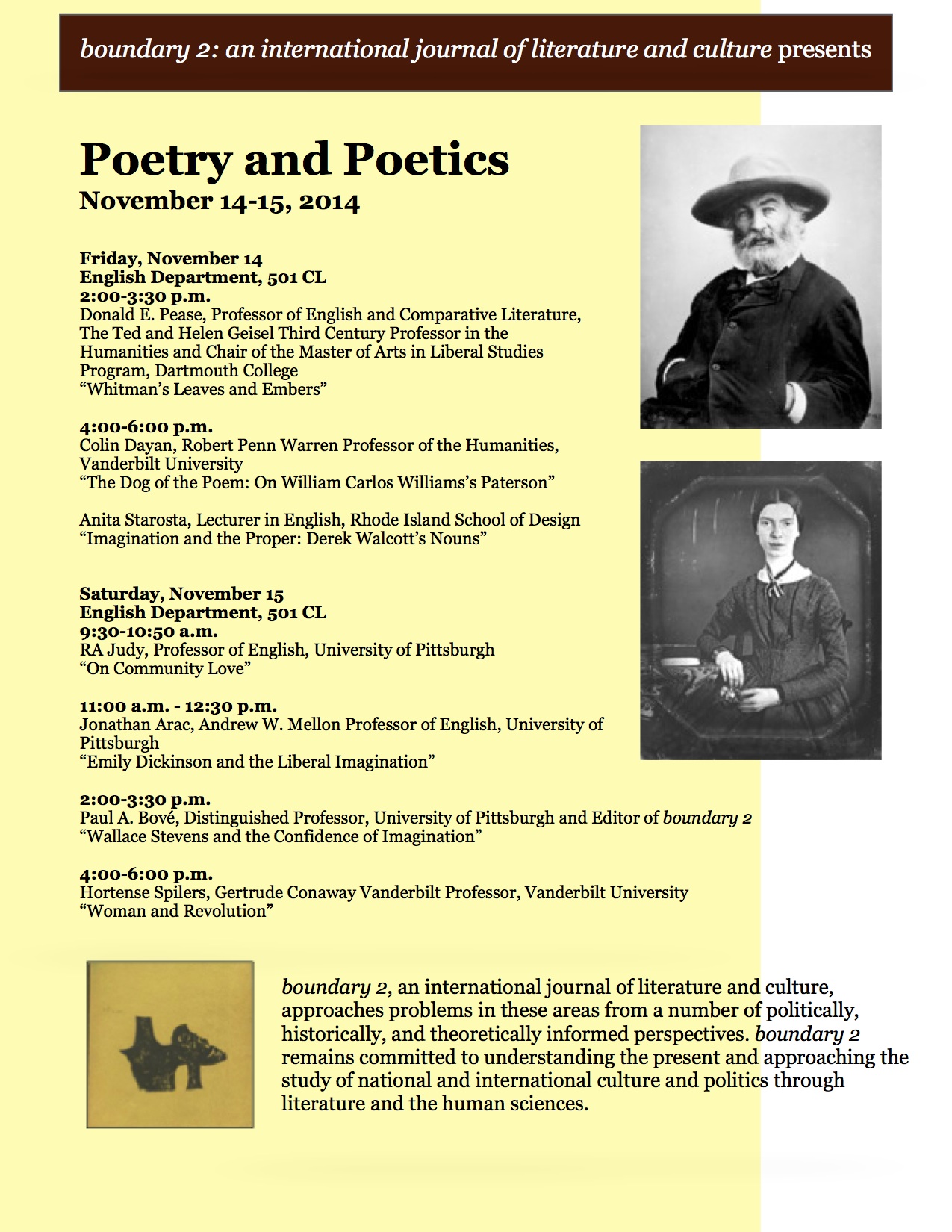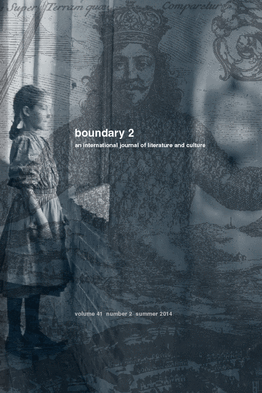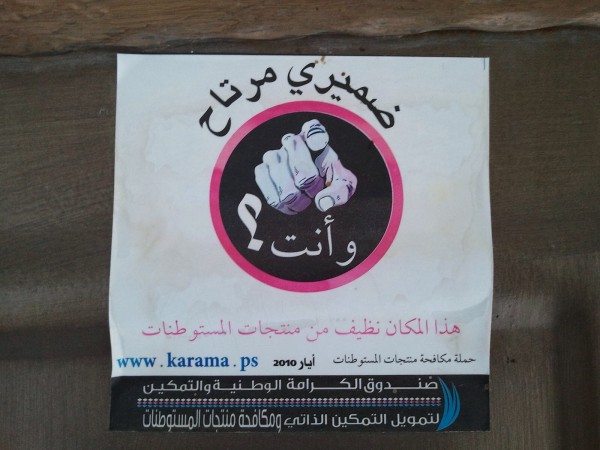This review has been peer-reviewed by the b2o editorial board.
a review of Colin Dayan, In the Ghost of her Belly (LARB 2019)
by D. Gilson
Death hung around my house. No way around fate, that’s what my mother told me.
“Once something bad happens, it will happen again.”
“My mother’s indifference dismantled my life,” Colin Dayan writes in her new memoir, for “out of the dust and confusion of my childhood, only the desire to escape emerges” (109). In the Belly of Her Ghost (LARB True Stories, 2018) is at turns a gentle meditation on escape and a violent exorcism of that constant, thrumming, haunting Oedipal yank, that tide that brings us back again and again to our mothers. Or, as Saeed Jones ends his own recent memoir, How We Fight for Our Lives (2019), “Our mothers are why we are here” (190). They are, he’s right. How could we, whether we want to or not, ever escape them?
The market of mother-fixated memoirs bubbles over. These include those written by celebrities, such as Melissa Rivers’ The Book of Joan: Tales of Mirth, Mischief, and Manipulation (2015) and Wishful Drinking (2008) by Carrie Fisher. The seminal of the literary memoir itself has often been mother-obsessed, such as Mary Karr’s The Liar’s Club (1995) and Jeannette Walls’ The Glass Castle (2005). Also, gorgeous tomes that break with conventional form, such as the graphic Are You My Mother: A Comic Drama (2012) by Alison Bechdel, or the comic-reveling Running With Scissors (2002) from Augusten Burroughs. There are lyric meditations on mothers in prosody coming from poets, such as Saeed Jones’ aforementioned How We Fight for Our Lives (2019) and The Long Goodbye (2008) by Meghan O’Rourke. There are those memoirs penned by the children of famous literary mothers, like Searching for Mercy Street: My Journey Back to My Mother (1994) by Linda Gray Sexton and I’m Supposed to Protect You From All This (2016) by Nadja Spiegelman. And this is all not to mention the glut of memoirs by mothers themselves.
This list is hardly exhaustive, though even in its brevity, it begs the question: do we need another memoir about a mother, however extraordinary the circumstances between mother and child might have been. I might have been wont to answer, “Probably not,” but then Colin Dayan’s trailblazing memoir arrived in my mailbox, and I’ve been forced to reverse this impulsive answer completely. For Dayan’s slim memoir “doesn’t read like a conventional narrative,” Jane Tompkins explains in her Los Angeles Times review of the book, “It’s about a woman who tries to exorcise the ghost of her deceased mother through writing.” Tompkins is right; In the Belly of Her Ghost is an inherited reckoning. But I want to take the space offered by this longer review to talk about the book’s delightfully complicated existence. For “I know that I will never be free of the past,” Dayan chants, “that it will never quit feeding on the present” (79). Thank God we get to live in Dayan’s menacing, always-feeding, gorgeous, complicated present, a present that cannot shake off the past.
Namely, I believe Colin Dayan’s In the Belly of Her Ghost generatively complicates four questions to which too many memoirs offer ready-made answers: 1) what is a mother? 2) what is a child? 3) what is race? and 4) what is the act of creative nonfiction-ing?
I: What is a mother?
“What has availed
Or failed?
Or will avail?”
—Robert Penn Warren, “Question and Answer”
Penn Warren’s poem is not about mothers or mothering or being mothered. But the questions he asks offer us an interesting entry into considering how the mother functions as a narrative device. Many memoirs celebrate the triumphant mother, the one who has availed; mourn the disastrous mother, the one who has failed; or imagine alternative pasts or futures of the one who will avail. In the Belly of Her Ghost offers no simple progenitor for us to instantly recognize and digest. Instead, Dayan offers us a complex figure who defies our recognition, queers it, and makes us re-approach the mothers in our own lives and in the other texts we consume. Aren’t we all always, after all, consuming mothers one or another? Or perhaps, instead, we find ourselves being consumed?
“Who was the sacrifice,” Dayan wonders, “my mother or me?” (43) The question comes early, but haunts the life, and afterlife, of the memoir, for sacrifice is always central to how Dayan and her mother relate, at times failing to relate, to one another. “As a child, I was in awe of the woman,” Dayan begins, “She laughed at me, screamed at me. She shunned me, but now, dead, she stays close. Sometimes she comes down the wall like a spider” (3). But who was this woman-cum-spider, and who is she still? The web of her identity confuses Dayan, and thus us, and draws one in. This mother was born in Haiti and could never, or would never, articulate her biracialness, though so much of her life was spent attempting to pass for white in public, while privately conjuring the songs of her childhood Caribbean home. Soon after this mother’s family immigrated to New York, she, aged 17, went on a date with man twenty years her senior. This man, “took her to the circus. He tried to teach her to ride horses and eat mussels” (7). Dayan never knows if her mother wanted to go with her father to the circus in the first place, but
That same year, my mother traveled from Brooklyn to a honeymoon in Mexico. They traveled around for two years, then to Nashville and, finally, to Atlanta. The South must have seemed to her like a cross between Haiti and New York. ‘I would have been an actress,’ she told me. ‘Then I met your father.’ But she never stopped acting. She lived to be looked at. (8)
By the time Dayan joined this cross-cultural family – her mother, a biracial Haitian immigrant, and her father, a Jewish immigrant from X – they were living in the cultural capital of the Jim Crow South. They were passing for white, or an acceptable shade of off-white, a type of sacrifice in and of itself that allowed them access to many, if not all, of Atlanta’s institutions. The family’s origin was thus muddled. For “in the south,” Dayan argues, “domesticity and chatter and ease are almost always accompanied by something gross. The sweetest memory depends on the shattered life of whatever is granted neither leisure nor mercy” (30).
We are almost always seeking out our origins, often to our betterment, and often to our detriment. In August of 2019, The New York Times launched the 1619 Project in observation of the 400th anniversary of the first African slaves arriving to Point Comfort, Virginia; the project “aims to reframe the country’s history, understanding 1619 as our true founding, and placing the consequences of slavery and the contributions of black Americans at the very center of the story we tell ourselves about who we are.” This is a worthwhile endeavor, to be sure. Conversely, in late 2018 Democratic presidential contender Elizabeth Warren joined a swath of white Americans taking home DNA tests – such as Ancestry or 23andMe – in attempt to prove valid her claims of “authentic” Native American heritage; CNN reports that Stanford geneticist Carlos Bustamante, who analyzed Warren’s results, “places Warren’s Native American ancestor between six and 10 generations ago, with the report estimating eight generations.” Such focus on race’s chimerical and arbitrary nature is dangerous. Or to echo Cherokee Nation Secretary of State Chuck Hoskin, Jr., “Using a DNA test to lay claim to any connection to the Cherokee Nation or any tribal nation, even vaguely, is inappropriate and wrong. It… [dishonors] legitimate tribal governments and their citizens, whose ancestors are well documented and whose heritage is proven.” On the one hand, our search for our very origin can be a productive act of cultural and artistic reckoning; and on the other, our search can lead us to the abyss of reinforcing the appropriative violence that is certainly one of our American heritages.
Thankfully, Dayan’s In the Belly of Her Ghost does not become the former. And though it is certainly an origin story, the book succeeds, in part, because I believe Dayan is seeking not her origin, per se, but to understand, and to reckon with, the remaining ghost of her mother, or mothers, because, she writes, “the dead remain hidden in us. But from time to time they make themselves known” (127). I say mothers in the plural in the most literal sense possible. For yes, Dayan’s biological mother was the Haitian woman passing for white in Atlanta, the thwarted actress, the doll in a beaded gown who would pass by (and through) Dayan’s ear singing Sinatra or bits of songs in the haunting lilt of French Creole. But there was another mother in Dayan’s life, the one I find too few reviews of the book have given her due. This mother was the charged with keeping the household in order like a fine-tuned engine. This mother was a black woman named Lucille.
“Only two people mattered to me, and they are still on my mind,” Dayan writes (31). One was Thomas, the family’s yardman. And the other? “Lucille, the woman who raised me,” Dayan admits, “and, I almost wrote, ‘the love of my life’” (31). Whereas Dayan’s biological mother was, in many ways, a ghostly figure moving violently through Dayan’s childhood, Lucille offered corollary: “Lucille gave me joy… She taught me the kind of dread that as also desire: the longing to go out of this world and know what can’t be seen” (33). The caricature of the black “mammie” is all-too alive and well in Southern literature; one need only look as far back as Kathryn Stockett’s 2009 book The Help, which became a star-studded film. But even if Lucille might become such a caricature in lesser hands, in Dayan’s thoughtful, careful prose she is the mother Dayan needed — not perfect, but not ghostly, which is to say, present.
“Lucille told me bedtime stories,” (36) Dayan explains, and “she saved me from the Lord’s fury, even though she scared the living daylights out of me” (40). This both-and-ness, the story teller and the fear maker, existed holistically in the relationship between Lucille and Dayan, a mixture I suspect should exist between every mother and child, especially those of the American South. And lest we forget: though Lucille was black, it is clear Dayan was not exactly white, no matter how hard her biological mother tried to hide this fact. Lucille, thankfully to Dayan, did not try to hide this fact, but let the color of their lives pass over them as if it was a quilt not to be hidden away in the humid heat of Atlanta. Lucille “must have known my mother was not really white,” Dayan explains, “but it didn’t matter anyway, and she called me her baby. It was all confused.” The memoir relishes in that confusion – particularly of who is the mother, and of what race even means at every corner – and it is the better for relishing in that very space of perplexity.
And as with her biological mother, Dayan continues to be haunted by Lucille, too, a haunting that places the woman less as family servant, and more as competing matriarch, even in her various reincarnations in the afterlife. “Lucille died,” Dayan writes, “My story begins. She was never gone, but stayed with me in the dirt or in the wind, surprising me just when I thought I had survived the night terrors… She came before me just as she told me she would” (39).
It is perhaps easy to read both mothers as failing, and indeed, in many ways they “fail.” But they also persist, and as Jack Halberstam argues, “if success requires so much effort, then maybe failure is easier in the long run and offers different rewards” (2011: 3). Dayan’s matriarchal origins are so out-of-focus, they fail on the level of absolute knowledge; but is that a failure? Or instead, does the slippery nature of motherhood in In the Belly of Her Ghost offer us different, perhaps better, rewards? In short, yes, resoundedly yes. Or as Dayan’s mother tells her, “We’re in a hole. I cannot exactly catch onto the rope to get out without hurting you. So we’ll never find each other, but maybe there are other ways to make our lives mean something when words are dead” (139). In the Belly of Her Ghost offers us a completely unique and appropriately complex vocabulary to discuss mothers, mothering, and motherhood, a vocabulary we lack because the words are coming to us already dead, and the book, in its conjuring of the ghostly, brings them back to life. And as the slim volume centralizes the ghostliness of mothers, it also brings into question the existence of children.
II: What is a child?
“Between the dark and the daylight,
When the night is beginning to lower,
Comes a pause in the day’s occupations,
That is known as the Children’s Hour.”
—Henry Wadsworth Longfellow, “The Children’s Hour”
Longfellow argues, oddly enough for the nineteenth century, that the night and all its mysteries belong to children. The night, that time full of mystery, yes, but also the unknown, and the unknown danger, and the unknown danger that you know is there and yet cannot name. In In the Belly of Her Ghost, Colin Dayan works in this lineage, queering the line between child and adult, daughter and mother at every turn.
And what is Dayan’s childhood, or better said, how do we come to spiritually experience it? For as Longfellow argues, Dayan’s childhood is lived “between the dark and the daylight.” We know Dayan’s childhood is perpetual, as she is always haunted by both her mother and Lucille, despite how much she ages. And despite where she visits or lives — Philadelphia, New York, Paris, Haiti, Nashville — it is always and forever a Southern childhood of Atlanta. For Dayan, and thus for us, that Southerness is palpable; “pussy and possum,” she writes, almost prays, “that’s about as close as I can get to my sense of the South: sticky, hot, and unusually cruel” (24). The comparison to other great Southern memoirs — especially Dorothy Allison’s semi-autobiographical Bastard Out of Carolina—would be easy to make, given Dayan’s shared focus on the potential and often simultaneous beauty and cruelty of Southern childhoods in their specificity. But whereas Bastard and other memoirs of the Southern canon enlighten readers to that particular brand of Southern poverty, Dayan offers us a unique vision of childhood in the South that I’ve yet to experience: one where glamour is always on the edges.
Glamour rests on the edges like the photographs that punctuate In the Belly of Her Ghost, photographs that, in essence, spawn the writing of the memoir itself, which originates with Dayan receiving her mother’s earthly possessions and sifting through them (almost like a spider, the creatures that also punctuate the memoir). One photograph shows Dayan and mother on the flagstone patio of their northeast Atlanta home. “We look uncomfortable,” Dayan writes, “caught in a pose that tries to appear natural when everything about it is strained” (110). Dayan is dressed in a ballerinas’ outfit, replete with tutu and tiara, a look we are led to believe was not her usual finery. But then there’s her mother, within whom, Dayan describes, a grace and “lightness takes shape, as my eye follows her legs, taut and lean under her tight skirt, up to the hip casually slung, to the right arm, with bangles on the wrist and a cigarette held loosely in her hand” (110). It’s the picture, quite literally, of mid-twentieth-century Southern metropolitan elegance. But of course, for both mother and daughter, that elegance comes at a cost of mysterious measure: “the eyes are strained,” Dayan continues describing her mother, “too much of the eyebrow is plucked, and the face, though beautiful, looks dead, the smile held too long” (110-111). The cost, I suspect, as is the cost in many passing narratives of the American South in particular, is the desire to both belong and to be. Or as Dayan’s father tells her earlier with a sigh, “it’s no good to be too strange in a country you love” (8).
Lucille and Dayan’s mother are not the only ghosts we reckon with here. That child in the ballerina get up, or that same child frying chicken in the kitchen with Lucille, or singing “Dixie” in Mrs. Guptill’s fifth grade class, later to irritate her parents and Lucille by taking the side of Civil Rights activists, that child that is Dayan herself, we reckon with her ghost, too, even though Dayan makes clear that “I hate my own nostalgia, [for] it goes against the grain of everything I believe in” (69). But what do we have beyond our nostalgia in the very act of writing a memoir? How do we answer the question of the children we were, and in many ways, will always be? This perpetual child is complex, admittedly, or as Kathryn Bond Stockton contends, “what a child ‘is’ is a darkening question. The question of the child makes us climb into a cloud… leading us, in moments, to cloudiness and ghostliness surrounding children as figures in time” (2009: 2). In the Belly of the Ghost forces us to face this cloudiness, this ghostliness, however, and shows us that we are all, as Dayan models, children or figures fallen out of time.
Dayan allows us to unpack, consider closely, and make altars of her mother’s things alongside her because she’s not only a child fallen out of time, but, as Dayan confesses, she always “longed for [Mother’s]things as if they might magically transform my childhood irrelevance” (140). We are allowed to journey with her in attempt to transform the very tropes of childhood in literature itself. We are led, all-too-often, to believe that childhood itself is something we grow out of and shed; what is the twisted moral of Peter Pan, after all, if not that we all, every last one of us, must grow up? In the Belly of Her Ghost offers the lingering ghostliness of childhood to which Bond Stockton alludes. It is as if, Dayan seems to be learning, and thus we alongside her, we are playing dress up with decaying clothes, and yet clothes that never leave us entirely. Such as a heavily beaded outfit of her mother’s Dayan finds in a box after her mother’s death. “Things, like ghosts, know what they want,” Dayan writes when she finds the “evening gown and jacket, covered in blue and white sequins… I remembered how it held her body in its weight and beauty. The dress was more alive than my mother’s smile” (141). But when Dayan gives the dress to Goodwill, the dress, her mother, her childhood, is not done with her: “I walked back to the garage. There on the floor lay a small sequined belt. I picked it up and held my mother’s tight little waist in my hand. It is not easy to tell a ghost story that is not meant to frighten” (141). Childhood, like the belt, like the act of playing dress up, wants us to return to it, to be haunted by it, however frightening that prospect might be.
Here, Dayan revels in the ghostliness of her childhood. She continues to live it, to face it, to make more and more life out of it. In the Belly of Her Ghost is “an elegy with a covert manifesto of hope,” Andrea Luka Zimmerman writes. This revelry, of both elegy and hope for the child that was, and yet, remains, is a necessary performance that too many memoirs are unable or not willing to take on. For this mixed-race child of immigrants always and forever on the edges of glamour and ruin is story that needs to be told.
III: What is race?
“The poet invents heroic moments where the pale black ancestor stands up
on behalf of the race… She can see silent spaces
but not what they signify, graphite markings in a forester’s code.”
—Elizabeth Alexander, “Race”
For those of us in the American South, whether by birth or migration, by choice or by necessity, and whether white or black or otherwise, we know race is key, albeit unstable centrality of our identity. Likewise, Roderick A. Ferguson contends that when “analyzed in terms of subjectivity, race helps to locate the ways in which identities are constituted” (207). Races constituted as non-white, at the height of Jim Crow in the South, nonetheless, are particularly analyzed and re-analyzed, subject to a haunting that will follow the body from birth well beyond death. Colin Dayan’s search for the ghost of her family’s — and thus her own — race is perhaps the squeaky mechanism that she must oil again and again. The pulley that, no matter how much she greases it, will not turn smoothly. In this way, In the Belly of Her Ghost becomes both a narrative of passing and of diaspora.
Dayan’s mother, at the bequest of her wealthy husband — a prominent business owner of Atlanta society, perhaps despite his Jewishness — publicly played down her Haitian identity. Thus, her passing as white became a timely desire for Southern ease in the 1940s, ‘50s, and ‘60s. Or as Dayan writes, “this denial of her history was not anything like a grab for white power and privilege, but rather a casual act performed in exchange for a lifestyle of luxury, which just happened to be white,” adding that “this false if stylish veneer killed her spirit and destroyed any chance for happiness” (9). Though it perhaps “destroyed any chance for happiness,” it provided afternoons of sitting with friends in fabulous dresses drinking cocktails and listening to Frank Sinatra. Nights at The Standard Club, an Atlanta golf course and dinner society. But on the flipside of her easy white life, Dayan’s mother had in her employ two distinctly black bodies: Lucille and Thomas. “I hear my mother ringing the bronze bell my father brought back from Czechoslovakia in 1946,” Dayan remembers, “In the morning when she awakened, she called for Lucille to bring her breakfast in bed” (32). So of course, the mother’s passing had a cost not only for herself, but also for those around her, her competing matriarch Lucille, who could never pass as white, especially. But what strikes me in In the Belly of Her Ghost now is the effect her mother’s passing had on Dayan herself.
This young Dayan, who craved, I believe, consciously or not, to align herself with the non-white bodies surrounding her. The Freedom Riders on television. The lunch counter protesters downtown near her father’s store. The Birmingham preachers on the radio. And of course, her other mother, Lucille, with whom Dayan created a secret, exclusive, and magical world all of their own. For, as Dayan recalls, Lucille
figured I was in the enviable position of being not too white or too black, which meant that I could find out more things about such people than she could. That’s how we lived: she told me secrets about how to win the fight and sent me out into the world not exactly like bait, but pretty close to it, like an expendable spy. We waited. Waited until I got old enough to be mostly on my own, and by that time, as she knew, I’d have learned my lesson about which kind of people to fear, when to hate, and when to brawl. (114)
For what are spies if not those who can pass (and what are children if not expendable)? As odd as it may be to claim, part of the magic—that strange concoction of glamour and tragedy always on the edges—of Dayan’s childhood is her role as expendable spy, the one who watches the world around her burn, figurative like Sherman’s Atlanta, and wraps herself “in a bundle of quotations…amulets stored up against my mother’s hatred and what I feared was a curse put on me” (45). For despite living in a seemingly white household, those curses brought from Haiti were always within arm’s reach.
Thus, that house was not only a house of passing, but a house, too, of diaspora. For as Jonathan Boyarin and Daniel Boyarin argue, “diaspora offers an alternative ‘ground’ to that of the territorial state for the intricate and always contentious linkage between cultural identity and political organization” (10). If we think of the nuclear family as an analogue for the territorial state (and on the very micro level, the family surely is, especially a family like Dayan’s with its often warring factions), then cultural identity and political organization were always in flux, at war, and fluid in such a household containing a removed father, an always-acting mother, a set-in-her-ways alternative mother, and a ghostly child, all of whom were constituted of different races. It became a site of diaspora, though one difficult, perhaps impossible, to explain. As Dayan admits, “It is difficult to explain the kind of distortion that such incongruous mixing ushered into my life. I found myself a willing prey to such inconsistency, torn between a singular, sad fantasy of the South and the need to keep on walking on the wrong side of white devils. Either way, I remained haunted by the chimaera of whiteness” (73). Such unclear but persistent haunting marks a very contemporary form of diaspora, for as Brent Hayes Edwards explains, “seen through the lens of diaspora… traditional, even paradigmatic concerns… are thrown into question or rendered peripheral” (78). Whereas Dayan’s parents might have found themselves, as non-white immigrants themselves, aligned with the mid-twentieth-century Civil Rights movements, they rejected their own diaspora. Dayan, however, even as a child, allowed herself to live in that place called Other, in alignment with Lucille, the mother she loved.
And this diasporic life is not something that leaves Dayan as she ages. “Now that I’ve returned to the South,” she writes, having moved to Nashville to become the Robert Penn Warren Professor at Vanderbilt, “an old fear beckons. That’s why Lucille keeps coming back to me. The white men are still tall and proud and their eyes bold and fearless… Their gaze takes me to a place of comfort that I don’t understand” (115). She doesn’t understand that place is a return to the racial questions of her childhood, perhaps, though she concludes that it is “something that gives me a respite from sensing that I don’t belong, that I am not right in my skin… I have a hunch that it has a lot to do with terror. [Those white men] still do not like me” (116). I suspect she will never understand. But I also suspect that this non-understanding of racial being is, in large part, what produced In the Belly of Her Ghost, so in a way, I pray Dayan never reaches the fulfillment of knowing.
IV: What is nonfiction-ing?
“Most nonfiction writers will do well to cling to the ropes of simplicity and clarity.”
—William Zinsser, On Writing Well
For those of us who teach memoir and creative nonfiction more generally, we’ve likely invoked William Zinsser, that monarch of our genre, a duke, perhaps, many times. I certainly have, telling my students, especially in the beginning stages of their sequence of creative writing workshops, to always aim for simplicity and clarity. That it is of paramount importance that your read always, at any moment, understand what is happening. We are not wrong to do this. Young writers often need to focus on simplicity, particularly of sentence structure, and clarity, particularly as they are often wont to, at the learned age of 19 or 20, explore the deep mysteries of their lives upon the page. So on the one hand, we quote William Zinsser and move on to talk about “the best” ways to plot an essay. And though this is sound advice for the beginning writer, as soon as we cross that line from novice to whatever-it-is-we-are-calling-ourselves-who-toil-and-then-publish this murky genre called nonfiction, we often through this advice right out the window (a cliché I would likely tell one of my students to strike).
Let me confess: there are moments within In the Belly of Her Ghost where I am utterly confused. “She answers me,” Dayan writes of her mother, long after her mother’s death, long after the professor is tucked into her Nashville home, “Still, in the morning, hanging by a thread at the edge of the window, she moves when I call her, ‘Hey, mother,’ with a lilt and depth that surprise me” (154). There is a photo of a spider, perhaps twisting in the light coming through that window by which she has built her web, that follows this paragraph. And where most writers would position the spider as a metaphor for their mother, Dayan believes the spider is her mother herself.
This is a surprising move, but one that fills me, so unexpectedly, with an unbridled joy that I cannot adequately express. Within the world of academic creative writers, it is not sexy to admit to a spiritual practice, especially one that, like Dayan’s, is constituted by parts of Christianity and mysticism. Most of us, it seems, are atheists, perhaps agnostics, and our un-belief is legion within the Ivory Tower. But on a very guttural level, I find myself questioning my un-belief through reading and re-reading In the Belly of Her Ghost, for Dayan succeeds in making so beautiful the thing I thought I had lost: that the ghosts of our pasts can haunt us and in turn, comfort us, however oddly, and make us never truly alone. Which is, in a way, a path to which we might, as Dayan so superlatively demonstrates here, approach the act of creative nonfiction-ing itself.
Dayan starts in failure, writing of her mother, and of her own writerly self:
As a child, I was in awe of the woman. She laughed at me, screamed at me. She shunned me, but now, dead, she stays close. Sometimes she comes down the wall like a spider.
For years I’ve been writing her story. Much of it remains incomplete, pages with titles like “The Lady with Camellias,” “A Daughter’s Lament,” or “Blues in the Night.” I tried in vain to forget her, but she has stayed around as close to me as my breath, hovering like dust hanging in the air. (3)
But as we’ve already seen, failure has its own unique benefits. By starting in failure, we are forced, thankfully, to take the spiritual journey this slim memoir requires of us. Lucille told Dayan the year before she died that “you can find God in an outhouse hole” (39). I believe, and how strange it is to even use that verb in this sense, that you can find God in In the Belly of Her Ghost. The ghost story Dayan so fears she is writing only to fright has, in surprising ways a levity we offered in our position as readers, hovering above the photos and the appropriately scattered collection of memories, the talisman and the bits of song in Creole and English, the devil’s bargains and the lord’s surprises and grit of things described so clearly we can almost feel them rough against our thusly bared skin.
Madison Smartt Bell writes of the memoir that “here for the first time [Dayan] turns her rigorous intellect toward her own life, onto her vexed relationship with her mother and subsequent suffering.” Smartt Bell is certainly not wrong, and he joins a chorus of reviewers and blurbers offering similar praise; but I’m thankful for the space this long review essay has provided me because I think most reviewers have overlooked the utter, strange, often funny joys that also underlie the book. The turning of motherhood, and childhood, and race, and the very act of memoir on its head, spinning us something new, a stunning web into which we find ourselves, luckily, caught.
REFERENCES
Boyarin, Jonathan and Daniel Boyarin. 2002. Powers of Diaspora: Two Essays on the Relevance of Jewish Culture. Minneapolis: University of Minnesota Press.
Dayan, Colin. 2018. In the Belly of Her Ghost. Los Angeles: LARB True Stories.
Edwards, Brent Hayes. 2014. “Diaspora.” In Keywords for American Cultural Studies, edited by Bruce Burgett and Glenn Hendler. 76-78. New York: New York University Press.
Ferguson, Roderick A. 2014. “Race.” In Keywords for American Cultural Studies, edited by Bruce Burgett and Glenn Hendler. 207-211. New York: New York University Press.
Halberstam, Jack. 2011. The Queer Art of Failure. Durham, NC: Duke University Press.
Jones, Saeed. 2019. How We Fight for Our Lives: A Memoir. New York: Simon & Schuster.
Stockton, Kathryn Bond. 2009. The Queer Child, or Growing Sideways in the Twentieth Century. Durham, NC: Duke University Press.

